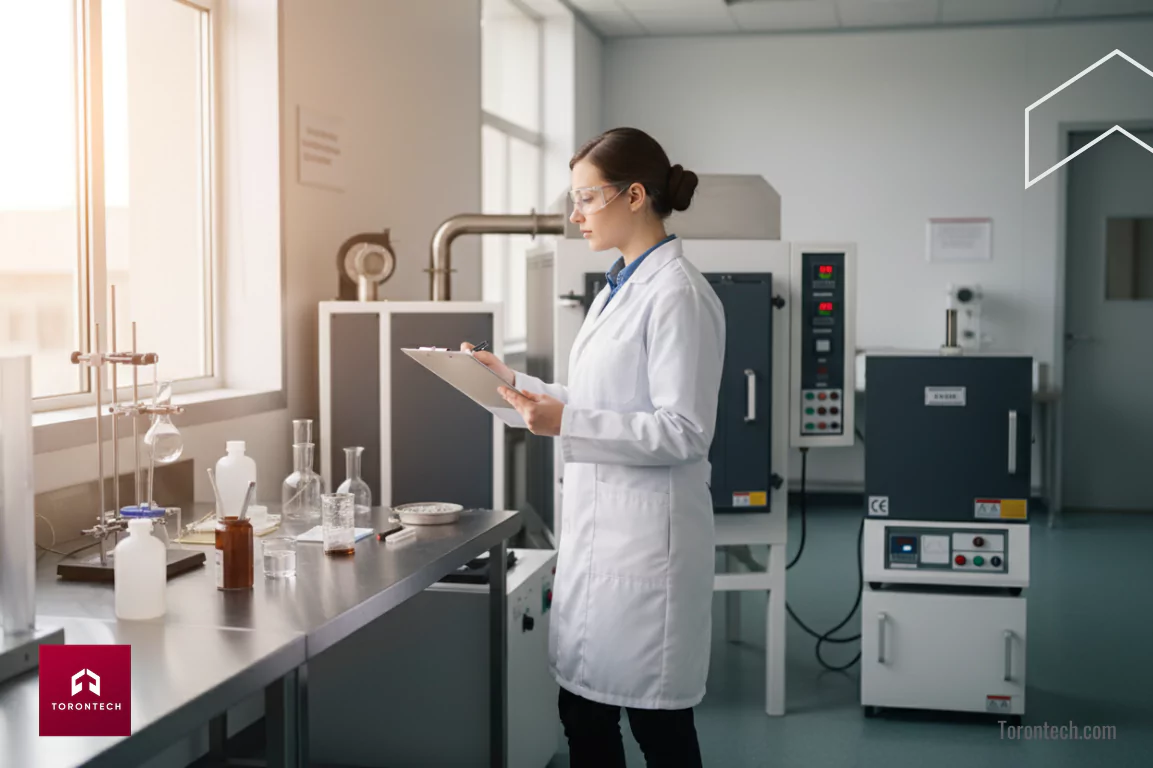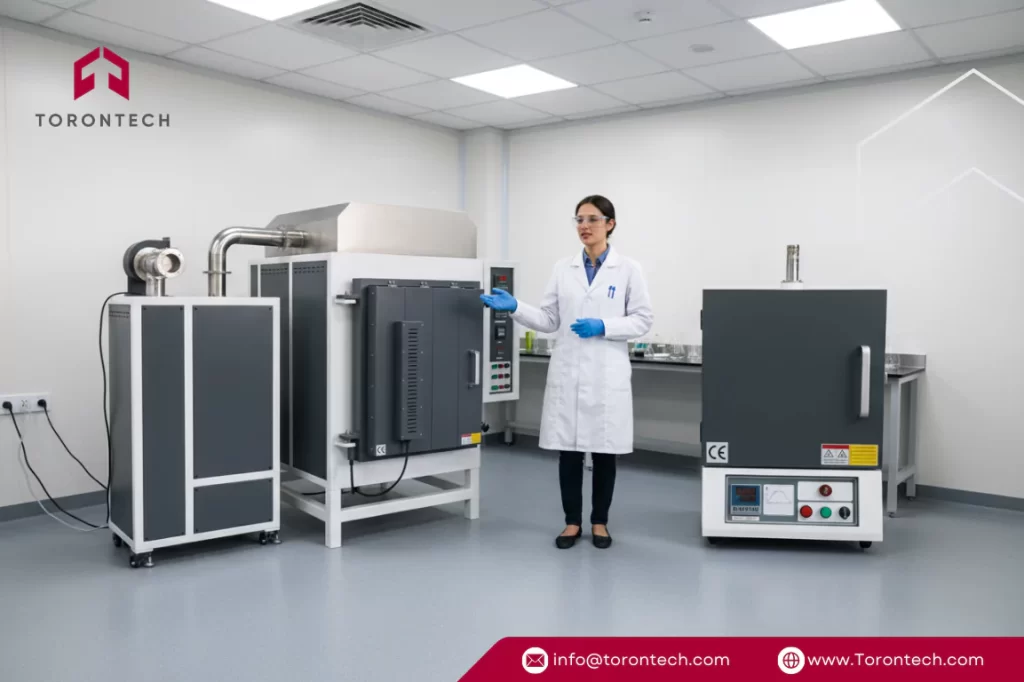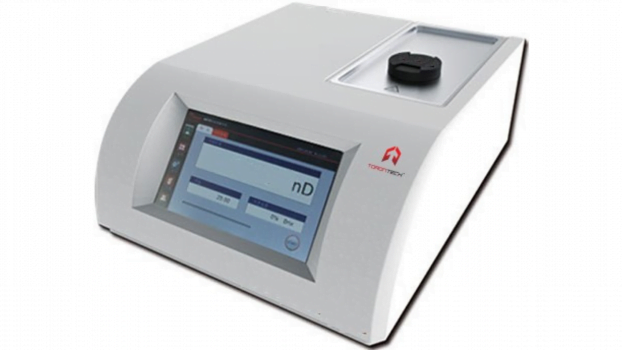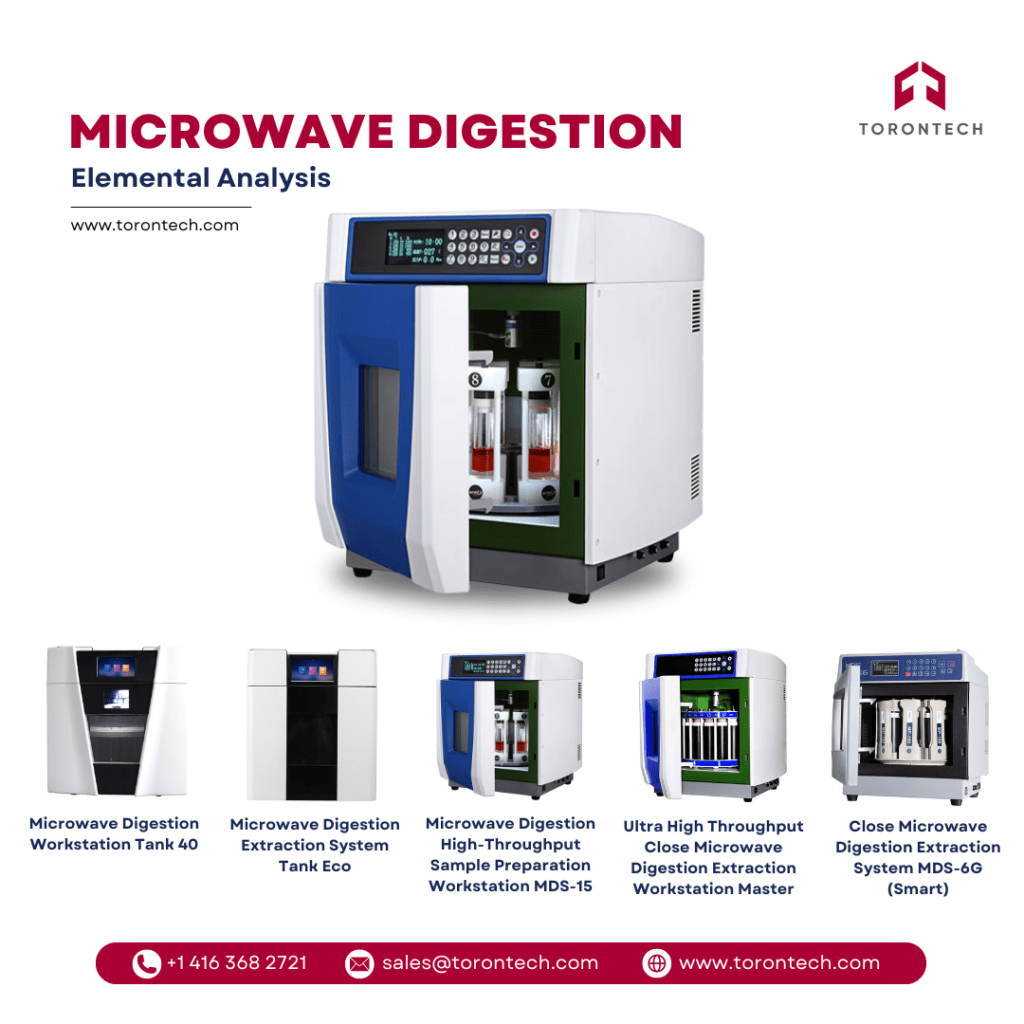Using a lab oven for a furnace’s job is an operational mistake that costs time and money. There’s no way around it.
These are two completely different classes of equipment, and choosing incorrectly leads to compromised results and project delays. Anyone who has seen their materials fail from improper heating knows exactly what we are talking about.
This guide will break down the essential differences in the lab ovens vs furnace comparison, so you can equip your facility with the right hardware for the work you need to do.
Lab Ovens vs Furnace: A Practical Comparison

To see the core differences immediately, here is a simple breakdown. We find this is the clearest way to start the conversation with our clients.
| Key Characteristic | Laboratory Oven | Industrial Furnace |
| Operating Temperature | Reaches up to around 450°C (842°F) | Starts at 1000°C (1832°F) and goes much higher |
| Heating Method | Circulates heated air for uniform temperature | Uses intense radiant energy to heat materials directly |
| Primary Functions | Drying, sterilization, curing, component testing | Heat treating, sintering, ashing, calcination |
| Construction | A standard insulated cabinet design | A heavy-duty steel frame with refractory lining |
| Atmosphere Control | Uses the ambient air in the room | Can operate with a vacuum or specific inert gases |
The Core Distinction: How They Deliver Heat
The fundamental difference in the furnace vs lab ovens discussion lies in how they generate and transfer heat. One is designed for uniform, controlled heating, while the other is built to deliver powerful, high-impact thermal energy.
Laboratory Ovens: High-Performance Convection Systems
A laboratory oven is the go-to equipment for processes that require exceptionally stable heat at lower temperatures. It functions by heating the air within its chamber and then using fans to actively circulate that air.
This method of convection heating is vital for ensuring every surface of an object is heated evenly and precisely, eliminating the risk of hot spots.
A Practical Example: Consider curing a sensitive adhesive on an electronic component. The process requires holding the part at exactly 125°C for one hour. A lab oven excels here. It surrounds the component with a gentle, consistent flow of hot air, executing the process with high precision.
Industrial Furnaces: Delivering Powerful Radiant Heat
An industrial furnace is built for a single purpose: to create and contain exceptionally high temperatures.
Its operational range starts where lab ovens stop. To do this, furnaces employ radiant heating. Specialized, high-power heating elements emit intense thermal energy, which travels directly to the materials being processed.
This method is vastly more effective for high-temperature work, and it’s why our furnaces are constructed with heavy-duty refractory linings.
A Practical Example: Take the process of hardening a set of steel gears. They must be heated to over 900°C to alter their internal grain structure. A furnace is the only tool for this job. The intense radiant energy quickly and efficiently brings the dense metal to the target temperature. Attempting this with hot air would be incredibly inefficient.
Matching the Equipment to the Application
From our experience, correctly matching the equipment to the process is critical. When considering furnace vs lab ovens, your specific application is the best indicator of which you need.
- Heat Treating Metals: For processing large batches of parts, an industrial chamber furnace offers the capacity and power required for consistent hardening and tempering results.
- Sintering Advanced Materials: Creating solid parts from powders requires incredible temperature stability. This is an ideal application for a muffle furnace.
- Gravimetric Analysis (Ashing): In quality control labs, a muffle furnace is the standard for cleanly burning off organic compounds to determine a sample’s inorganic content.
- Processes Requiring Atmosphere Control: For materials that are sensitive to oxygen at high temperatures, a purpose-built vacuum or atmosphere furnace is necessary.
A 4-Point Guide for the Lab Ovens vs Furnace Choice
To ensure our clients invest in the right equipment, we guide them through this practical, 4-point evaluation.
- Define Your Maximum Temperature Requirement
The most critical factor is the peak temperature your process demands. Identify this temperature, then add a 15-20% buffer. This practice extends the life of the heating elements. If your required temperature is above 450°C, your selection must be a furnace. - Clarify Your Core Process
Are you simply removing moisture, or are you fundamentally altering a material’s structure? The former is a job for an oven’s convection heat. The latter demands the high-energy radiant heat that only a furnace can supply. - Evaluate Your Sample Dimensions and Batch Size
The physical size and volume of your workload will point you to the correct furnace configuration. Processing large parts may require a bogie hearth furnace, whereas treating a long, cylindrical object is a clear application for a tube furnace. - Determine Your Atmosphere Requirements
Finally, confirm if your process must be performed in a controlled atmosphere. If it requires a vacuum or an inert gas, you need a furnace specifically designed for that purpose.
Lab Ovens vs Furnace: The Right Choice with Torontech
The choice in the furnace vs lab ovens debate is a key decision that impacts your operational capacity and budget. For any process that demands high temperatures, a reliable industrial furnace is a long-term, foundational asset.
At Torontech, our focus is on providing clients with the right high-temperature equipment—solutions that are both effective and economical. Our ToronTherm Series is a complete line of industrial and laboratory furnaces, all engineered for durability and efficient operation. We meet the varied needs of industry by offering a full portfolio of furnace types, including Muffle Furnaces, Tube Furnaces, Industrial Chamber Furnaces, and specialized Vacuum & Atmosphere Furnaces.
If your operations require the performance of a high-temperature furnace, we invite you to speak with our experts. We can review your process requirements and provide a cost-effective quote for an optimal heating solution.
Need the Right Furnaces?
Explore cost-effective Torontech industrial and lab furnaces for reliable results.
Frequently Asked Questions (FAQ)
2. What is the price difference in the lab ovens vs furnace comparison?
You will see a significant difference in cost. A furnace requires a heavy-duty frame, specialized refractory bricks, and high-power control systems to handle the extreme temperatures safely. A lab oven has a much simpler construction. The higher investment in a furnace is a direct reflection of its capability.
3. You mentioned a "muffle furnace." What makes it different?
A muffle furnace has a special ceramic chamber—the "muffle"—that sits between the heating elements and your materials. This means your samples are heated by the hot walls of the chamber, not by direct heat from the glowing elements. This is very useful for processes that need exceptionally even heating.
4. How long does a furnace typically take to heat up?
That depends on the furnace's size and the temperature you're aiming for. A smaller lab furnace might get to 1000°C in an hour or two. A large industrial furnace will take longer because there is a huge amount of heavy refractory material to heat. It’s a much more deliberate process than with a lab oven.
5. What are the typical power requirements for a furnace?
This is a key point for facility planning. While a small lab oven might run on a standard wall outlet, virtually all industrial furnaces require a high-voltage, three-phase power supply. We always recommend consulting with a qualified electrician to ensure your site has the necessary infrastructure.








